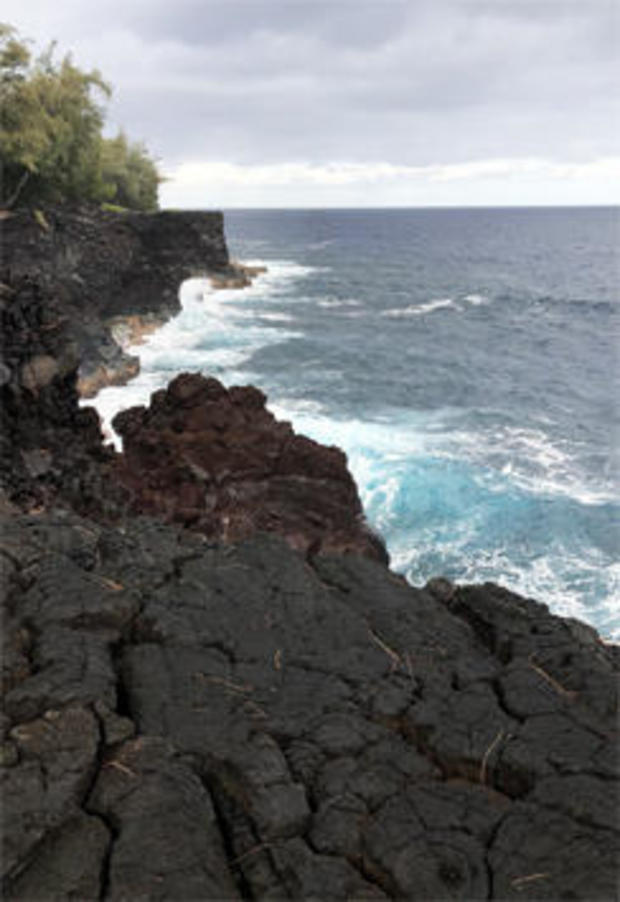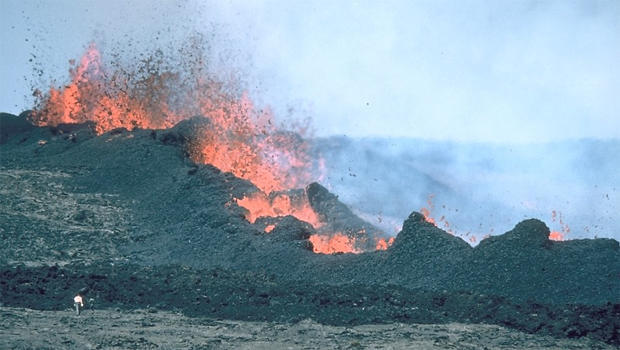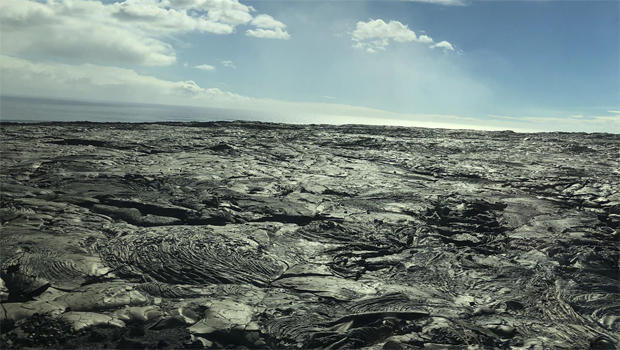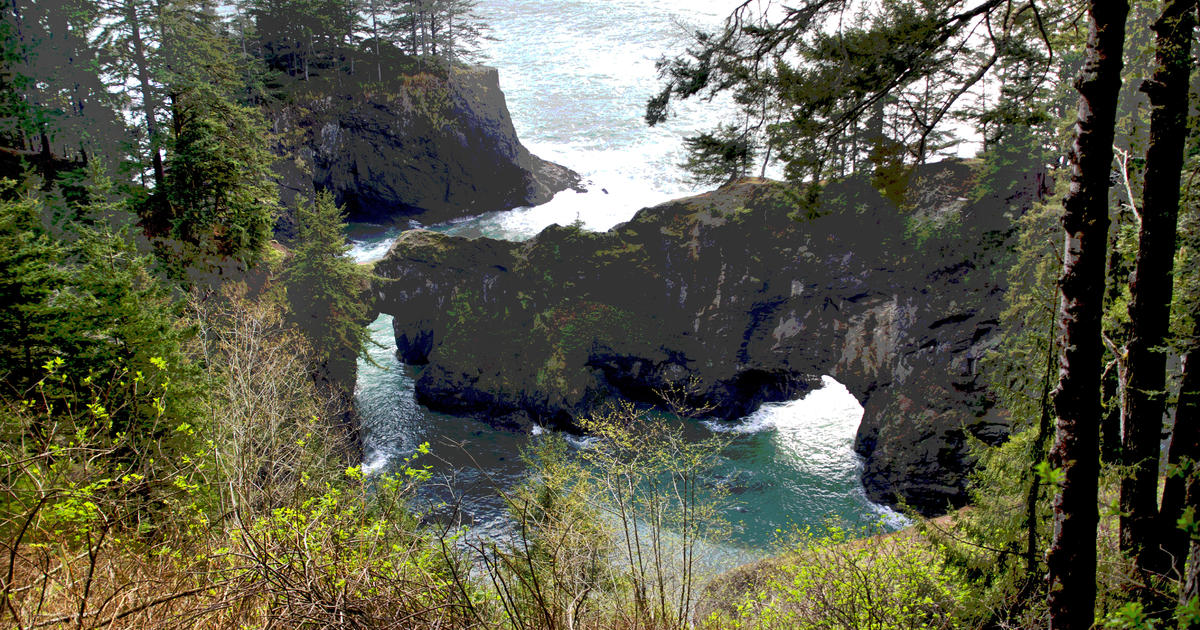Nature up close: How islands form
By "Sunday Morning" contributing videographer Judy Lehmberg.
Walking on lava may be the most otherworldly thing I have ever done. I was on the island of Fernandina, at 0.7 million years old, the youngest of the Galapagos Islands. Our guide had already regaled us with stories of how quickly shoes are destroyed on the lava. As I moved carefully, stopping frequently to admire the seemingly infinite lava folds, twists and ropes, I was very conscious that falling onto what is basically broken glass would not be a good idea. Amazingly, I didn't fall.
I always wanted to go to the Galapagos, Darwin's laboratory, and my wish came true in 2004. It was a naturalist's paradise, but I hadn't really given the islands' origins much thought. That all changed when I got there and saw not one but two volcanoes erupting. They both were minor eruptions; however, they were still impressive.
Nothing reminds us more of Earth's power as when moving geological plates snap, triggering earthquakes, or when molten rock breaks the crust and thrusts red hot magma from the Earth's interior upon the surface.
There are several common ways volcanoes form. Many are caused by oceanic plates diving under (subducting) a continental plate. The friction between the two plates melts crustal rock into magma, which forces its way to the surface and erupts as a volcano. The Pacific "Ring of Fire" refers to a string of volcanoes around the Pacific where subducting oceanic plates meet crustal plates.
Volcanoes form differently in the middle of oceanic plates, such as where the Galapagos Islands formed.
The Galapagos formed the same way as the Hawaiian Islands. Both archipelagos were created as pressurized magma was forced through a relatively thin spot in the Earth's crust -- a "hot spot." The crust is constantly moving, so the hot spot appears to move over time. The actual hot spot doesn't move, but because the crust does, islands form in a line, one after the other.
A hot spot began forming the Hawaiian Islands over 28 million years ago, 1,500 miles northwest from the site of the big island of Hawaii -- at 0.4 million years, the youngest island in the chain.
Hawaiʻi Volcanoes National Park, on the big island, is the location of Kilauea, the world's most active volcano, and Mauna Loa, the largest shield volcano.
It can be difficult to fully realize the power and size of a volcano. One way to conceptualize it is to consider that the top of Mauna Loa is 13,803 feet above sea level, but the ocean floor is 16,400 feet below sea level. Add to that the fact that the volcano depresses the sea floor 26,000 feet under Mauna Loa, and we realize it is 56,080 feet from the volcano's bottom to the top -- almost twice the height of Mount Everest. And Mauna Loa is 60 miles long and 30 miles wide, making up half of the entire island.
New lava is a great place to observe primary succession, the growth of new plants on a recently formed substrate. Some native Hawaiian plants, such as ferns, are well adapted to this radically changed environment, and can quickly move in as soon as new lava cools sufficiently. New plants can be found in as little as two years after a new flow.
Volcanoes are one of Nature's more humbling reminders that, although humans have radically changed the surface of the Earth, we are not in control, and should stand in awe of geological and other forces -- orders of magnitude far more powerful than us.
Judy Lehmberg is a former college biology teacher who now shoots nature videos.
For more info:
- Judy Lehmberg (Official site)
- Judy Lehmberg's YouTube Channel
To watch extended "Sunday Morning" Nature videos click here!






